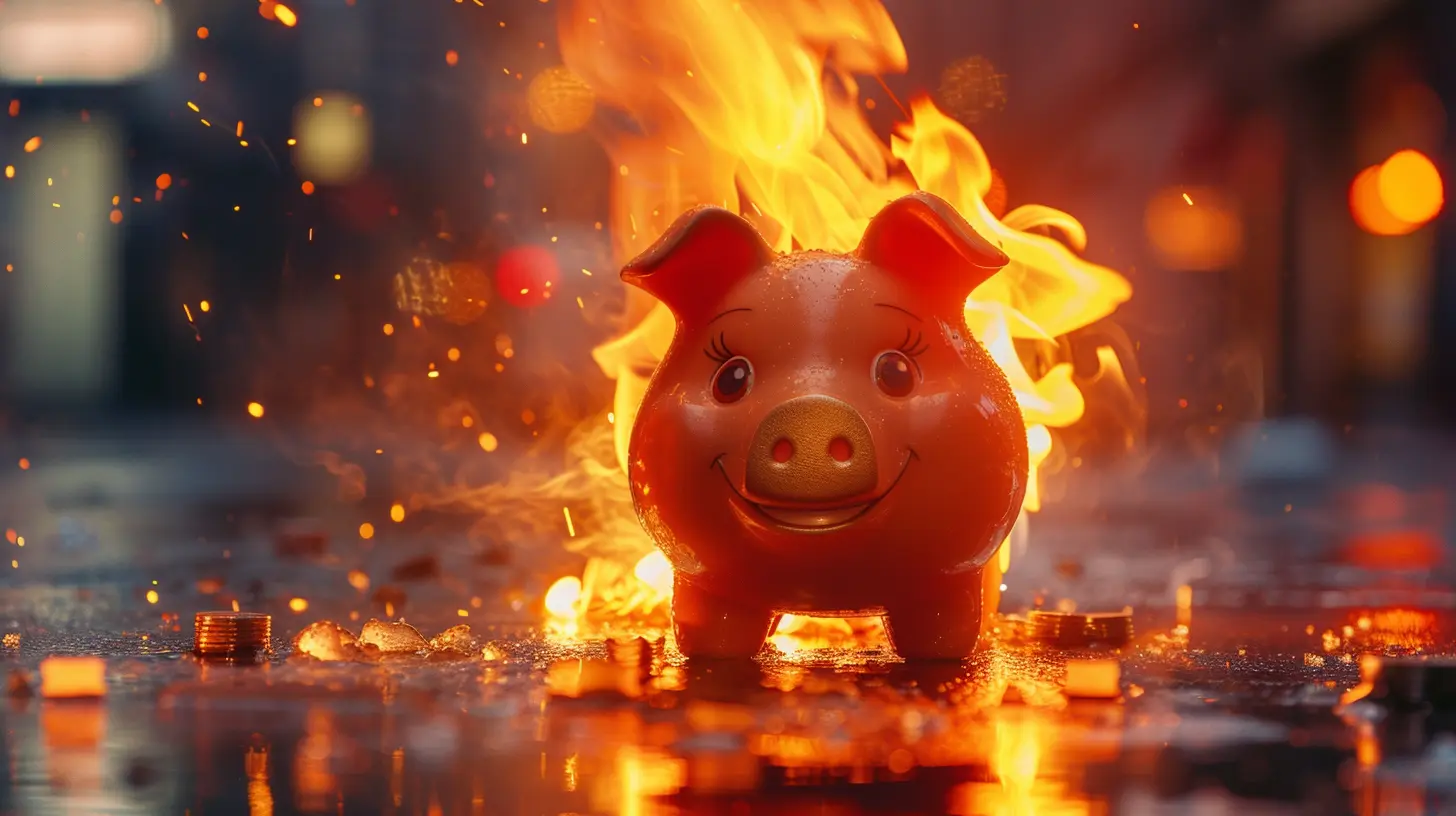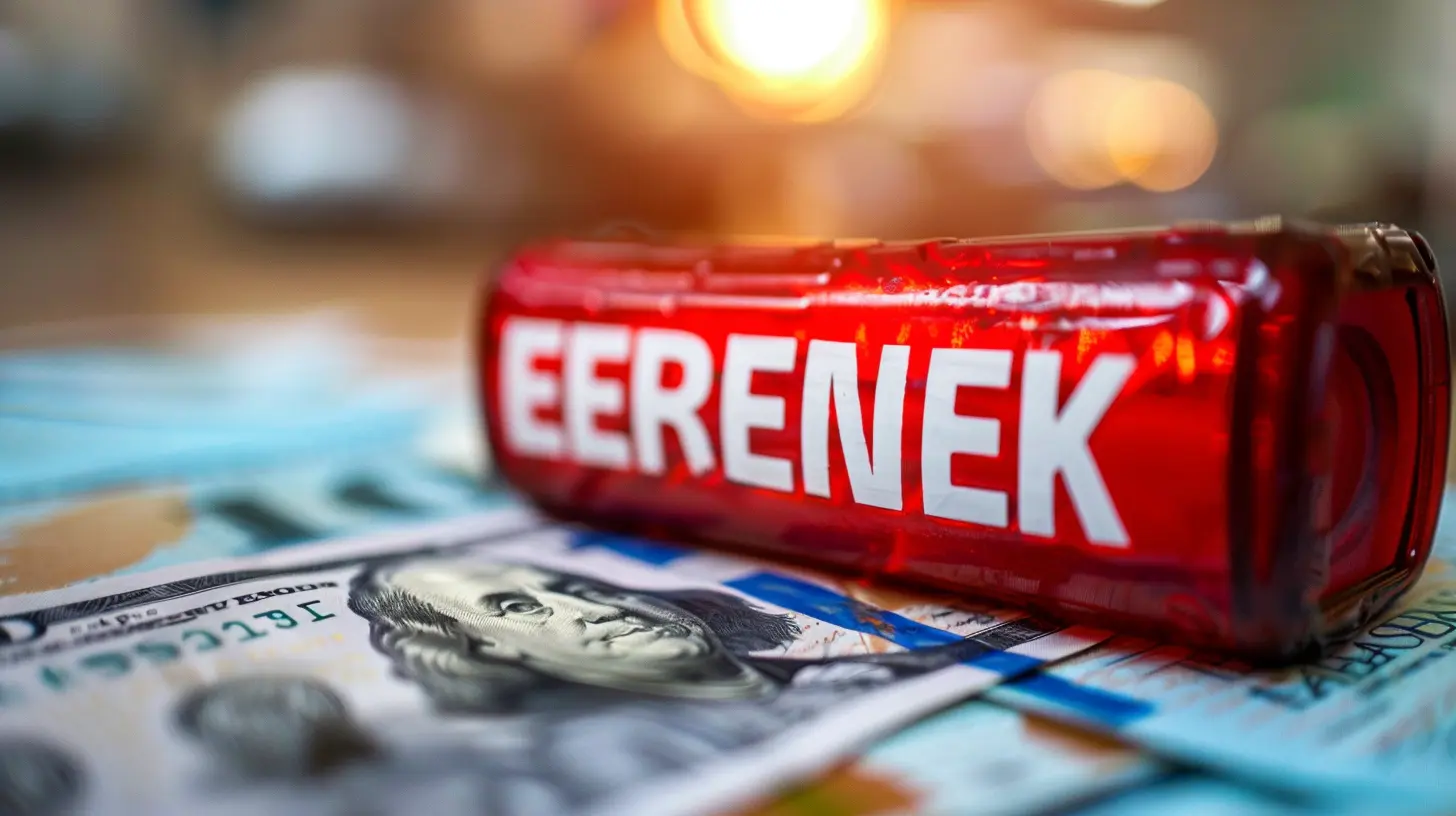Emergency Fund Building Beyond Six Months' Worth of Expenses
31 October 2025
Let’s face it—most personal finance advice today is laser-focused on building a 3- to 6-month emergency fund. But what if life throws you a curveball that lasts longer than six months? What if that layoff stretches out? What if an unexpected illness sidelines you for a year? Truth is, stopping at six months might not be enough anymore. So, let’s dig deeper and talk about emergency fund building beyond that six-month safety net.
Spoiler: It's not just for the paranoid. It's for the prepared.
Why Six Months Isn’t the Finish Line
Alright, so you’ve followed the golden rule. You’ve socked away enough to cover six months of housing, utilities, groceries, and basic needs. High five! But here’s a reality check: life doesn’t always stick to the plan.Think About This:
- Job markets can stay cold longer than your savings can stay hot.- High medical bills don’t appear with a warning.
- Natural disasters and family emergencies? Same story—totally unpredictable.
Six months used to be a benchmark. But with inflation, rising cost of living, and increasing economic uncertainty, you might need to set your sights a bit higher.
Who Really Needs More Than Six Months?
Okay, so not everyone's life situation demands a year’s worth of emergency savings. But let’s look at who should definitely consider going the extra mile.Self-Employed or Freelancers
If you’re your own boss, your income likely fluctuates. Some months are great, others... not so much. Having 9 to 12 months of expenses stashed away gives you room to breathe during lean periods without panic-selling your equipment or working for peanuts.Single-Income Households
When there’s only one income stream, everything rides on it. Kids, rent, car, insurance—you name it. Having extra buffer here is a no-brainer. If you’re the sole breadwinner, you don’t just want padding; you need a mattress.High-Debt Individuals
Debt doesn’t vanish just because your income does. If you’re carrying student loans, credit card balances, or car payments, you’ll want a deeper emergency fund to avoid falling into an even bigger hole.People Near Retirement
A job loss or financial emergency late in your working years could derail your retirement plans. A larger emergency fund acts like a financial airbag, reducing the odds that you'll need to tap into your retirement accounts prematurely.
How Much Is Enough?
This is the million-dollar question—well, hopefully not that much—but definitely more than you'd think.If six months is the standard, then 9 to 12 months is your next-level goal. Want to go ultra-secure? Aim for 18 months. That’s right. A year and a half.
Let’s break it down.
- Basic Safety Net: 3–6 months (survival mode)
- Moderate Cushion: 6–9 months (comfort zone)
- Extended Protection: 9–12+ months (peace of mind)
The amount depends on your risk tolerance, obligations, and lifestyle. Ask yourself: “How long could I realistically go without income before serious damage is done to my finances?” That number is your target.
Where Should You Stash It?
Here’s the thing—you want access without the temptation. You're not looking to invest this money in high-risk stocks or tie it up in a 5-year CD.Best Places to Park Your Extended Emergency Fund:
1. High-Yield Savings AccountsInstant access, no risk, and a decent interest rate. Perfect for the first 6–9 months of emergency funds.
2. Money Market Accounts
A bit more interest, slightly less liquidity—but still a solid choice.
3. Short-Term CDs (Laddered)
Great for the extra buffer beyond 6–12 months. Laddering CDs can help you avoid early withdrawal penalties while earning a better return.
4. Treasury Bills
Low risk, predictable returns, and you can choose the time horizon.
Just avoid stock markets unless you’re okay with withdrawals during a downturn—because Murphy’s Law loves to strike when the market’s down 20%.
How to Grow That Emergency Fund Without Losing Your Mind
Let’s be real: saving is hard. Saving for something you might never use? Even harder.But it doesn't have to feel like climbing Everest.
1. Automate Your Savings
No willpower needed. Set up recurring transfers—weekly or monthly—and let technology work for you.2. Funnel Windfalls
Got a tax refund, bonus, or stimulus check burning a hole in your pocket? Redirect at least part of it to your emergency fund. You won’t miss what you didn’t expect.3. Side Hustle Your Way There
Ride-share driving, freelance gigs, dog walking—whatever works. Dedicate all side income to your emergency fund until you hit your goal.4. Slash & Redirect
Go through your budget like a ninja. Cancel what you don’t use, downgrade what you can, and reassign that cash to your emergency stash.5. Gamify It
Set milestones and celebrate small wins. Hit 3 months? Treat yourself to a guilt-free night out. Hit 9 months? Take a weekend trip. Make it fun!When to Use Your Emergency Fund—and When Not To
This is a biggie. There’s a fine line between a true emergency and just... convenience. That emergency fund isn’t a "get out of adulting free" card.True Emergencies:
- Job loss- Major medical expense
- Critical home or car repair
- Emergency travel (family illness or funeral)
Not Emergencies:
- Concert tickets- Holiday shopping
- That random deal on a smart TV
- A “treat yourself” weekend
Be brutally honest. Ask yourself: “If I don’t spend this money now, will someone suffer?” If the answer’s no, back away.
Beyond the Emergency Fund: What Comes Next?
Once you’ve nailed down your extended emergency fund, you’re in rare financial air. Most people never get here.So, what's next?
1. Invest for the Long Term
With your emergency fund squared away, you can take more risks in your investment portfolio. Stock index funds, ETFs, and other long-term vehicles start to make more sense.2. Focus on Debt
Use extra cash flow to wipe out high-interest debt. Your emergency fund shouldn’t be your only line of defense.3. Build Other Funds
Think of these as specialized savings accounts:- Medical fund (especially if you have a high-deductible health plan)
- Home maintenance fund
- Car repair fund
- Job loss insurance (yes, it's a thing)
4. Financial Flexibility
With this kind of cushion, you have options. Hate your job? You can quit and pivot. Want to move cities or switch careers? You have time to figure it out.That’s not just financial security. That’s financial power.
Common Myths About Extended Emergency Funds (Let’s Bust Em’)
“It’s a Waste of Money Just Sitting There.”
No, it’s peace of mind. It’s future-you thanking past-you for not being reckless. It's not wasted—it's well-positioned.“I’ll Just Use My Credit Card if Something Comes Up.”
That’s borrowing future money at double-digit interest rates. It’s the financial equivalent of fighting fire with gasoline.“I Have Insurance—Why Save So Much?”
Insurance has deductibles, exclusions, and waiting periods. Your emergency fund cushions the gaps.Final Thoughts
An emergency fund beyond six months’ worth of expenses isn’t about being overly cautious—it’s about being responsibly prepared. Life’s unpredictability isn’t going away, so why should your financial game plan stop at “good enough”?Start small, stay consistent, and always aim higher. Your financial future isn’t just about surviving—it’s about thriving in uncertain times.
Building beyond six months is the new smart money move. You in?
all images in this post were generated using AI tools
Category:
Emergency FundAuthor:

Knight Barrett
Discussion
rate this article
1 comments
Raina Ramos
Building an emergency fund over six months? That's great! Just remember, it’s for emergencies, not for pizza cravings!
November 3, 2025 at 5:44 AM

Knight Barrett
Absolutely! An emergency fund is essential for unexpected expenses, not for everyday indulgences. Thanks for the reminder!


